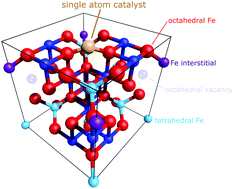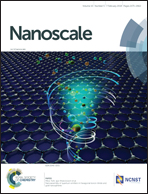Probing the geometry of copper and silver adatoms on magnetite: quantitative experiment versus theory†
Abstract
Accurately modelling the structure of a catalyst is a fundamental prerequisite for correctly predicting reaction pathways, but a lack of clear experimental benchmarks makes it difficult to determine the optimal theoretical approach. Here, we utilize the normal incidence X-ray standing wave (NIXSW) technique to precisely determine the three dimensional geometry of Ag1 and Cu1 adatoms on Fe3O4(001). Both adatoms occupy bulk-continuation cation sites, but with a markedly different height above the surface (0.43 ± 0.03 Å (Cu1) and 0.96 ± 0.03 Å (Ag1)). HSE-based calculations accurately predict the experimental geometry, but the more common PBE + U and PBEsol + U approaches perform poorly.



 Please wait while we load your content...
Please wait while we load your content...